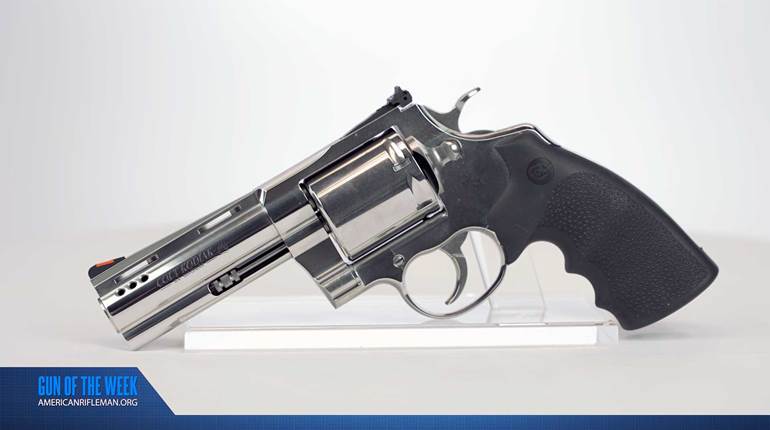When it comes to British military rifles, the Pattern 1800 Infantry "Baker" rifle is an icon due to its service in the Napoleonic Wars. Then the Pattern 1853 Enfield rifle musket revolutionized the concept of the military muzzleloader. But in between the two was a unique design inspired by a similar arm adopted in the German state of Brunswick. Watch our "American Rifleman Television" I Have This Old Gun segment above to hear the story of the British Brunswick rifle.
"The British actually standardized the idea of a military use rifle fairly early on, starting with the Pattern 1776, which is just essentially a standardized Jaeger rifle," American Rifleman Executive Editor Evan Brune said. "This is further codified right around the turn of the century with the Pattern 1800 Baker rifle, and the Baker is iconic, but by the 1830s, the Baker is really becoming old and what they come up with and what they adopt is actually designed, it's already been fielded in Germany by the Duke of Brunswick. And that's why it's known today as the Brunswick rifle."

Unlike other military rifles that had come before it, the Brunswick did not make use of traditional land-and-groove rifling, which made loading slow and cumbersome for British riflemen in decades past.
"The rifle itself was interesting in that, rather than using just a plain round ball and a patch, it had two deep grooves down the barrel, and the ball itself had a ring cast around the bullet that mechanically fit into these grooves," American Rifleman Field Editor Garry James said. "This was not a new device, however, it was the first time it was really used to any great degree in a military arm."

Two models of the Brunswick rifle saw service in the British military. The first model made use of a "backlock" action commonly seen on sporting rifles and even some military rifles of the era. However, it had a major drawback.
"It makes the wrist of the stock a lot weaker. And so, in order to strengthen the overall design, they go to a second model of the Brunswick rifle, and it features a traditional sideplate lock," Brune said. "And in fact, the profile of this sideplate lock is very reminiscent of what we'll see later on the pattern 1853 Enfield."
 The muzzle of British Brunswick rifles had two opposing scallop cuts that aligned with the rifling grooves in the bore. This allowed troops to orient the belted ball correctly without having to visually align the belt with the rifling.
The muzzle of British Brunswick rifles had two opposing scallop cuts that aligned with the rifling grooves in the bore. This allowed troops to orient the belted ball correctly without having to visually align the belt with the rifling.
Despite this advancement, the two-groove system that used the belted ball was a dead end in the evolution of military arms.
"It was not a long-lived system because there were lots of advances being made in military firearms at that period," James said. "Consequently, it had about a 10-year lifespan in active use. However, it was used much longer both in the sporting field and by British militia."
To watch complete segments of past episodes of American Rifleman TV, go to americanrifleman.org/artv. For all-new episodes of ARTV, tune in Wednesday nights to Outdoor Channel 8:30 p.m. and 11:30 p.m. EST.























